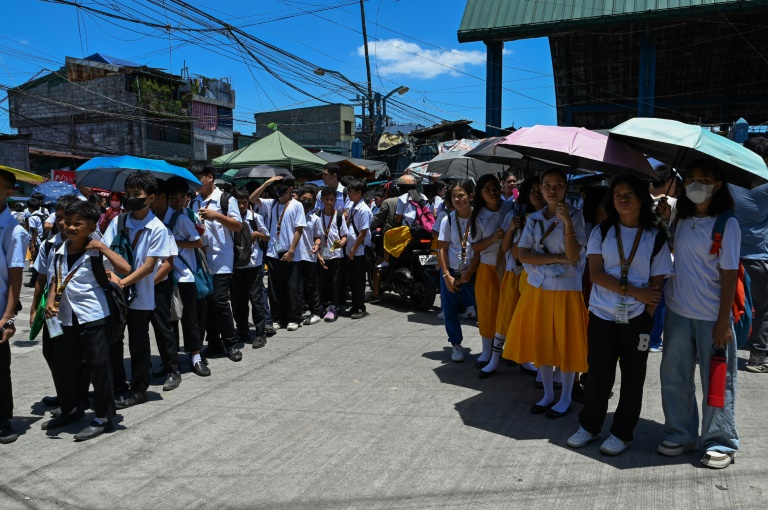Last month's record heat forced Asian governments to close schools, providing further evidence that climate change threatens the education of millions of children.
While the arrival of seasonal rains is now bringing relief to some parts of the region, broader issues remain and many countries are unprepared to deal with the impacts of climate change on schooling. Experts warn that it is not enough.
Asia is warming faster than the global average, and climate change is causing more frequent, longer and more intense heat waves.
But heat isn't the only issue.
As the atmosphere warms, it becomes more humid, which can lead to heavy rain and flooding.
Advertisement – SCROLL TO CONTINUE
This could result in the school being damaged or rendered inoperable while being used as a shelter.
The hot weather can also lead to wildfires and spikes in air pollution, prompting school closures everywhere from India to Australia.
The United Nations children's agency UNICEF warned last year that “the climate crisis is already a reality for children in East Asia and the Pacific.”
Advertisement – SCROLL TO CONTINUE
Mohua Akhter Noor, 13, is living proof of that claim as she swelters in her one-room home in Bangladesh's capital Dhaka after schools closed.
Intermittent electricity means they can't even rely on fans to cool their tiny homes.
“The heat is unbearable,” she told AFP last month.
“School is closed, but I can't study at home.''
Shumon Sengupta, country director of the NGO Save the Children, said April was the 11th consecutive month of record global heat, and the pattern was clear in Bangladesh.
Advertisement – SCROLL TO CONTINUE
“Not only are temperatures rising, but the periods of high temperatures are becoming much longer,” he told AFP.
“Previously, heatwaves like this occurred in very few areas, but now they are much more widespread across the country,” he added.
Advertisement – SCROLL TO CONTINUE
Schools in many parts of Asia simply do not have the capacity to cope with the growing impacts of climate change.
Although Bangladesh's urban schools are strong, they are often overcrowded and have little ventilation, Sengupta said.
In rural areas, tin roofs can turn classrooms into ovens, and power for fans is unreliable.
Advertisement – SCROLL TO CONTINUE
In Bangladesh and other regions, students often walk long distances to and from school, putting them at risk of heat stroke in the process.
But school closures have serious consequences “particularly for children in poorer and more vulnerable communities who lack access to resources such as computers, the internet and books,” said Salwa Aleyani, UNICEF's East Asia and Pacific health specialist. said.
These children are also “less likely to have better protection at home during a heat wave.”
Sengupta said school closures put children at increased risk of child labor, child marriage and even human trafficking, as they may be left unsupervised by parents who cannot afford to stay home.
Climate change also indirectly threatens schooling.
UNICEF research in Myanmar shows that crop shortages due to rising temperatures and unpredictable rains are forcing families to pull their children out of school to help with work or because they can no longer afford to pay tuition fees. found.
Some wealthy countries in the region are taking steps to protect children's education in the face of climate change.
In Japan, less than half of all public schools had air conditioning in 2018, but after a series of heatwaves, that percentage jumped to more than 95 percent by 2022.
However, even developed countries cannot mitigate all impacts.
Australian authorities have repeatedly closed schools due to bushfires, with a study finding that this is having a long-term impact on learning for students in the hardest-hit areas.
Mr. Sengupta said that while developing countries in the region need support to invest in infrastructure, the only real solution to the crisis lies in tackling the root cause: climate change.
“It is very important that governments and policy makers take this issue seriously,” he said.
“The climate crisis is a children's crisis. Adults are causing the crisis, but children are the ones most affected.”


